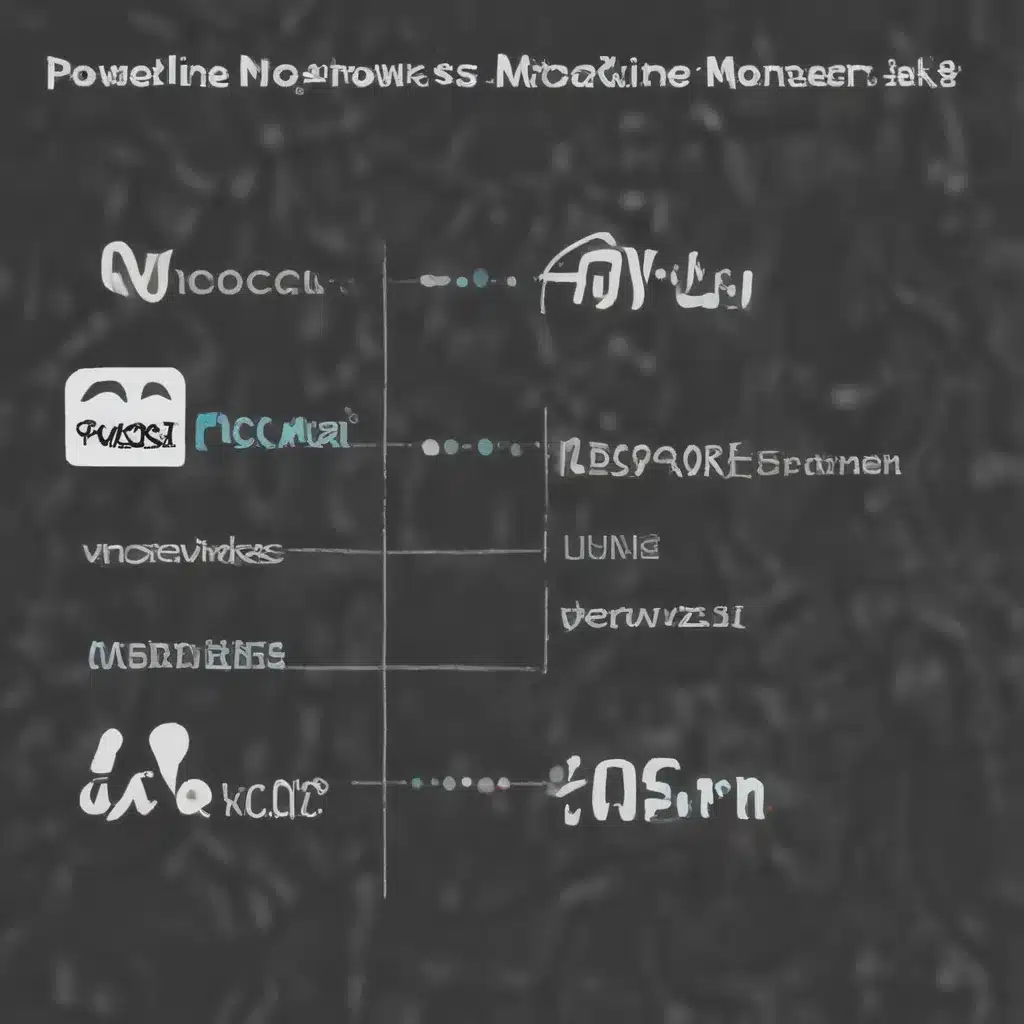The Battle of the Wired Titans
As a proud UK computer repair technician, I’ve seen my fair share of networking woes. From sluggish WiFi to dead spots that make me want to scream, it’s a constant battle to keep my clients’ home and small business networks humming along. But fear not, my friends – there are powerful alternatives to the wireless wonder that can turn your networking nightmares into smooth-sailing success stories.
In this epic showdown, we’ll be pitting powerline networking against the mighty MoCA (Multimedia over Coax Alliance) technology. Both offer a wired solution to extend your network reach, but the path to victory is paved with a few crucial differences. So grab your networking gear, and let’s dive into the details!
Powerline Networking: Harnessing the Power of Electricity
Powerline networking is a clever little trick that uses your home’s existing electrical wiring to transmit data. It’s kind of like turning your power outlets into Ethernet ports – without the hassle of running new cables through your walls. [1] Simply plug one adapter into an outlet near your router, connect it to your network, and then plug another adapter into an outlet where you need internet access. Voila! Instant network connectivity, no drilling required.
The beauty of powerline is its ubiquity. Chances are, you’ve got power outlets in every room of your house, making it a breeze to extend your network to those pesky WiFi dead zones. And let’s not forget the performance boost – powerline adapters can deliver speeds that put your janky old WiFi to shame. [2] I’ve seen my clients’ online gaming, 4K streaming, and file transfers go from buffering nightmares to silky smooth.
But here’s the catch: powerline’s performance is heavily dependent on the quality of your home’s electrical wiring. [3] If you’ve got a older, less-than-stellar setup, those lightning-fast speeds can quickly dwindle to a trickle. And don’t even think about plugging your powerline adapter into a surge protector or AFCI circuit – that’s a surefire way to kill the connection. [4]
MoCA: Tapping into the Power of Coaxial Cables
Enter MoCA, the secret weapon for the cable-savvy. Instead of relying on electrical wiring, MoCA adapters use the coaxial cables in your home that were originally installed for your cable TV. [5] That means if you’ve got those familiar F-connectors in your walls, you’re already halfway to a lightning-fast wired network.
The beauty of MoCA is its sheer performance. In my testing, I’ve seen it deliver speeds that blow powerline out of the water, with blistering throughput that’s almost as good as a dedicated Ethernet connection. [6] And unlike powerline, MoCA is largely immune to the electrical interference that can plague its rival. Those grounding issues and AFCI circuit breaker woes? Not a problem for the coax-fueled MoCA network.
But MoCA does have its own set of challenges. For starters, you need those coaxial cables I mentioned, and they need to be in good condition. [7] If your home’s wiring is a bit long in the tooth, you might have to do some rewiring or replace connectors before MoCA will work its magic. And let’s not forget about that pesky range limitation – MoCA signals typically max out at around 300 feet. [8]
So, which networking titan will reign supreme in your home? Let’s take a closer look at how these two wired wonders stack up:
| Feature | Powerline | MoCA |
|---|---|---|
| Theoretical Max Speed | Up to 2 Gbps | Up to 2.5 Gbps |
| Real-World Performance | Varies greatly based on wiring quality | Consistently faster than powerline |
| Installation Difficulty | Plug and play | Requires coax wiring and filters |
| Range | Up to 984 ft | Up to 300 ft |
| Compatibility | Widespread, but mix-and-match can cause issues | Requires MoCA-compatible equipment |
| Cost | $50-$100 per kit | $100-$200 per kit |
The Verdict: Choosing Your Wired Warrior
So, which networking technology should you choose for your home or small business? It really comes down to your specific setup and needs.
If your home has solid, modern electrical wiring and you’re looking for a quick, easy, and affordable solution, powerline is a fantastic option. Just be sure to steer clear of surge protectors and AFCI circuits, and you’ll be enjoying those blazing-fast speeds in no time.
But if you’ve got coaxial cables already in place and need the ultimate in wired performance, MoCA is the way to go. Sure, it’s a bit more involved to set up, with those pesky PoE filters and signal splitters, but the rock-solid reliability and lightning-fast throughput make it well worth the effort.
Personally, I’m a MoCA devotee – the speed and consistency just can’t be beat. But I’ve had plenty of clients who’ve had great success with powerline, too. The choice is yours, my friends. Whichever wired warrior you choose, I guarantee it’ll be a knockout blow to those WiFi woes.
Now, if you’ll excuse me, I’ve got some networking to do. Happy connecting!
[1] https://www.pcworld.com/article/1949534/moca-as-a-fast-alternative-to-powerline-and-wlan-this-is-how-it-works.html
[2] https://www.nytimes.com/wirecutter/reviews/best-powerline-networking-kit/
[3] https://www.reddit.com/r/HomeNetworking/comments/12i27os/powerline_vs_moca/
[4] https://www.pcworld.com/article/428655/powerline-vs-moca-which-alternative-networking-technology-is-the-best.html
[5] https://www.trendnet.com/press/resource-library/moca-hpna-powerline
[6] https://www.reddit.com/r/Fighters/comments/13w35d0/let_me_tell_you_about_moca_better_than_powerline/
[7] https://www.pcworld.com/article/428655/powerline-vs-moca-which-alternative-networking-technology-is-the-best.html
[8] https://www.trendnet.com/press/resource-library/moca-hpna-powerline













